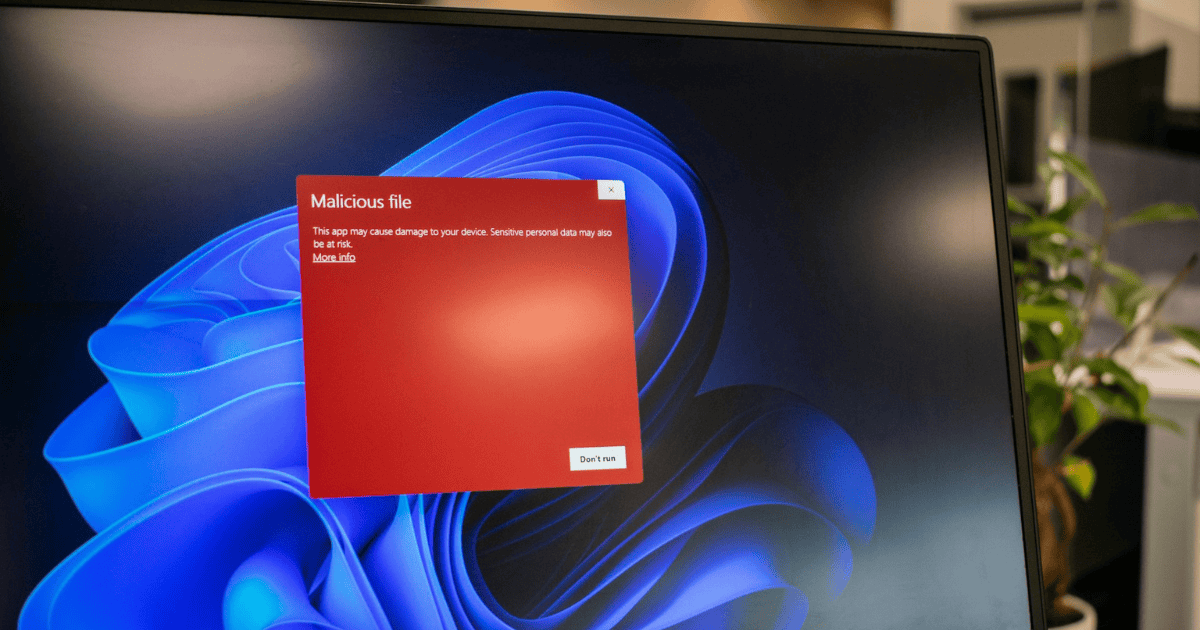Last Updated on 22 February 2024 by Alastair Digby
Your digital attack surface is the sum total of possible points of unauthorized entry into your environment. It makes intuitive sense that you’d like to reduce the size of your digital attack surface because if there are fewer entry points for hackers to target, it’s harder to get inside your network and steal sensitive information, install malware, or engage in any other nefarious activities.
Digital attack surface reduction is more challenging than ever as a result of complex and dynamic IT ecosystems constantly opening up new potential paths into your network. But just because reducing your attack surface is difficult, that doesn’t mean you don’t have options and strategies. This article overviews seven ways to reduce your digital attack surface.
Table of Contents
How to Reduce Your Digital Attack Surface
Keep A Real-Time Inventory Of Internet-Facing Assets
It’s easier to protect a smaller digital attack surface, however, an important barrier to attack surface reduction is the inability to maintain an accurate, up-to-date asset inventory of Internet-facing assets. This difficulty stems from the expansive, interconnected, and distributed nature of today’s IT environments, with assets constantly emerging and changing, opening up additional entry points into systems.
Employees or business units can add new SaaS applications to your organization’s toolchain rapidly without notifying or getting approval from central IT teams. DevOps teams regularly update existing web applications and swiftly spin up new apps; each of these changes may introduce vulnerabilities from third-party libraries or frameworks.
A well-defined, real-time inventory of external assets provides invaluable insight into who owns each asset and what the asset is used for. Moreover, a complete inventory facilitates prioritization, security assessments, and remediation actions that shrink the attack surface before threat actors find and exploit unsecured or vulnerable Internet-facing assets. This real-time inventory needs to be automated to keep pace with dynamic modern attack surfaces.
Monitor Your Cloud Services
If you were to pinpoint one singular change influencing the rapid growth of digital attack surfaces, look no further than the increased adoption of multi-cloud strategies. As companies try to innovate, keep pace with competitors, avoid vendor lock-in, and tailor cloud services for specific business use cases, a multi-cloud strategy becomes imperative. In one survey, 81 percent of respondents reported using two or more cloud service providers.
As you add new cloud environments or services, visibility and risk management get more challenging. You need to contend with a disparate range of approaches in terms of the available security controls and approaches used by specific cloud vendors. This complexity almost inevitably expands the attack surface too.
It is possible to start reducing your attack surface area no matter how many cloud service providers you use. Central to this is the ability to monitor cloud services, ideally through a single pane of glass rather than multiple control panels.
Dedicated external attack surface monitoring (EASM) or cloud security posture management (CSPM) solutions can provide cross-environment coverage into the kinds of exposures, misconfigurations, and vulnerabilities emerging across multi-cloud environments. Monitoring these security risks and mitigating them promptly reduces your attack surface whether you’re with one cloud provider or five.
Fingerprinting Your Digital Assets
Another suggestion for digital attack surface reduction involves some type of fingerprinting solution for your digital assets. In a cybersecurity context, fingerprinting usually refers to an offensive security strategy used by threat actors to determine software, network protocols, operating systems, or hardware devices running on a network.
For digital attack surface reduction purposes, fingerprinting certain assets means being able to map and keep track of them as they move throughout your ecosystem.
For example, if you can map the flow of data files you can see that they’ve moved to a public-facing system that’s unsecured. Immediate mitigation of such risks can reduce your attack surface by closing off potential points of data exposure or leakage. Automated data security posture management solutions can help with fingerprinting data.
Secure Your Development Environment
Several high-profile cyber attacks in recent years have exploited software supply chains, and some of these attacks originated in development environments. Think of SolarWinds; this now infamous attack began with a compromised Microsoft 365 that had access to the development environment of Orion. The threat actors then inserted malicious code into Orion updates, eventually leading to the compromise of federal US IT environments through those malicious software updates being delivered through the supply chain.
CI/CD pipelines speed up and automate many aspects of development (including testing, building, and deployment), often at the expense of expanding an organization’s attack surface.
Misconfigurations can leak code or other secrets. Attackers can potentially enter your environment through the plethora of tools often used in CI/CD pipelines. Security can’t be an afterthought in development environments if you want to reduce your attack surface.
For a start, implement strong access control across your toolchain and leverage multifactor authentication to decrease the chances of unauthorized intrusion. It’s important to also analyze code statically and dynamically to ensure there are no backdoors opened for threat actors. A business with a secure development environment is one that’s likely to excel at digital attack surface reduction.
Adopt a Risk-Based Vulnerability Management Process
In the rush to find every single vulnerability and remediate all of them, you miss out on the context provided by risk-based vulnerability management. After all, there are certain vulnerabilities that threat actors are more likely to exploit, perhaps because they have a larger business impact or they provide an easier path into your environment.
Risk-based vulnerability management refines your remediation efforts to hone in first on the smaller group of vulnerabilities that pose the biggest risks across your entire attack surface. By prioritizing and addressing these vulnerabilities first, you can quickly shrink your attack surface instead of fixing low-risk weaknesses that attackers are unlikely to focus on.
Continuously Monitor Your Digital Attack Surface
The third point on this list of 7 ways to reduce your digital attack surface emphasized the importance of security monitoring. To markedly reduce your attack surface, you need something more holistic than just focusing on monitoring cloud services. Your digital attack surface encompasses all Internet-facing IT assets and systems, not just the cloud attack surface. This includes code repositories, domain names, FTP servers, ports, IP addresses, web applications, VPN logins, and more.
Continuous monitoring is critical in mitigating the attack vectors that open up as vulnerabilities and misconfigurations impact the security of applications and other digital assets. The continuous element is pivotal here—you need a true view of your attack surface from an attacker’s perspective that reflects the present situation rather than last week or last month. EASM solutions typically provide these capabilities with detection engines that trigger instant alerts based on ongoing security checks performed against assets
Use Micro-Segmentation
Micro-segmentation is an approach to networking that divides your network into logical and secure zones. Each segment or zone contains a resource or group of similar resources, to which access is usually restricted based on least privilege access principles (i.e. users can only access resources that are strictly needed to perform their roles.) A segment could protect a specific environment, a group of similar applications, certain workloads, or important data.
Switches or next-generation firewalls typically control traffic flows into network segments based on an access policy. It’s important to remember that the total attack surface spans Internet-facing entry points plus the many internal entry points that make lateral movement possible. Micro-segmentation reduces that internal attack surface by enforcing granular controls that prevent lateral movement between different systems and environments.
Digital Attack Surface Reduction with Informer
Informer’s external attack surface management platform comes with several features that assist with implementing these attack digital surface reduction strategies. Automated attack surface discovery and inventory provide you with an accurate, up-to-date, and comprehensive view of your attack surface, including shadow IT assets that you didn’t know about. Continuous monitoring provides you with the intelligence to close off potential paths into your environment and shrink your attack surface. Real-time vulnerability prioritization facilitates risk-based vulnerability management by highlighting the most important risks that outsiders are likely to target.
Frequently Asked Questions
Why is reducing the digital attack surface important?
Reducing the digital attack surface is crucial because it helps minimize the potential avenues of attack for cybercriminals. By narrowing down the number of vulnerabilities and exposure points, organizations can significantly enhance their overall cybersecurity posture and reduce the risk of successful attacks.
How can I identify my digital attack surface?
Identifying your digital attack surface involves conducting a comprehensive inventory of all your online assets. This can be achieved through activities such as network scanning, vulnerability assessments, web application assessments, and manual reviews of your digital infrastructure.
How can vulnerability management help reduce the digital attack surface?
Vulnerability management plays a vital role in reducing the digital attack surface. By conducting regular vulnerability assessments and implementing a structured remediation process, organizations can identify and address vulnerabilities in a timely manner. This proactive approach helps minimize the potential attack surface by reducing the number of exploitable vulnerabilities.
Is it possible to completely eliminate the digital attack surface?
It is practically impossible to completely eliminate the digital attack surface since every online presence carries some level of risk. However, organizations can significantly reduce their attack surface by implementing effective security measures, proactive vulnerability management, and continuous monitoring to mitigate and respond to potential threats.
How frequently should I reassess and reduce my digital attack surface?
It is recommended to reassess and reduce your digital attack surface on a regular basis. The frequency of reassessment depends on the size and complexity of your digital infrastructure, the rate of changes and updates to your systems, and the evolving threat landscape. Generally, conducting a thorough assessment at least annually, or whenever significant changes occur, is a good practice to maintain a secure digital environment.





